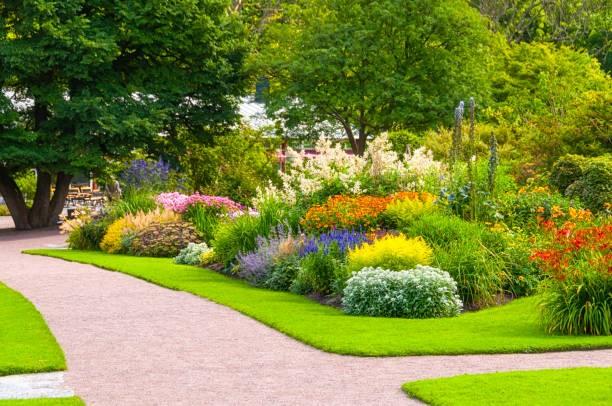One of the most fundamental aspects of a good garden design is to know how to use the right color in your garden landscape design. Color is an important element that dictates style, sets the mood, and creates cohesiveness. It can help you get a show-worthy garden. You can hire landscape contractors in Sacramento if you wish to have a colorful exterior. These professionals understand the basics of color theory and how it can be used when designing a landscape to get a beautiful and vibrant outdoor space.
Color Theory Basics
Landscape architects thoroughly understand how colors work together and affect overall perception. The color theory shows the relationship between colors and the concepts of tertiary, secondary, and primary colors. While warm colors like yellow and red bring energy, cool colors like green and blue create a sense of calm. You can use neutral colors like gray and white if you want to use transitions or stand-alone schemes. If you hire landscape contractors in Sacramento, you can get a beautiful combination of all these theories in your landscape design.
Having an understanding of color theory helps to create visually appealing compositions by using color relationships and variations. Value and intensity play a vital role in landscape design. You may also use lighter and darker shades to create contrast.
Do Individual Colors Play a Major Role?
Yes, Individual colors have their own symbolic meanings. Like white, the most versatile color in the landscape, that helps to cool us down on hot summer days and then sparkles in the dark October evenings. Let us see more colors that can add life to your landscape design.
- Blue: this is the color of tranquility and is restful and calm. It helps increase concentration and intuition.
- Purple: this is one of the most requested flower colors since it is associated with uniqueness, originality, and royalty, and also helps to calm the mind.
- Yellow: yellow is a sunshine color that helps us feel optimistic and cheerful. It also enhances our mental processes and clarity of mind.
- Red: this vibrant color symbolizes excitement, luck, and power. It effectively projects an air of confidence.
- Orange is the hottest and most energetic color in the spectrum that has been shown to excite emotions and increase appetite.
- Green: needless to say, green is one of the most important colors in any type of landscape design. It is what forms the base of landscape color theory. It is the most restful color to the eye that balances and alleviates anxiety.
Color Relationships
Color relationships are the relation between colors that create different effects. The main type of color relationships that work well in landscape design are discussed below.
- Monochromatic: these include different shades of the same color that combine to create a harmonious effect.
- Complementary: these colors are placed opposite each other on the color wheel and include pairs like red and green, blue and orange, and violet and yellow. These colors play off each other and create visual tension and contrast.
- Analogous: these include colors like orange and red that appear next to each other on the color wheel and are called analogous colors. Such colors have a harmonious relationship when paired together.
- Complex: complex colors include two analogous colors in addition to a complimentary color.
Choosing a Color Scheme for Your Landscape Design
Choosing the right color scheme for your landscape design is influenced by many factors like culture, climate, personal taste, and regional style. If you want colors that celebrate the seasons, you can go for red, white, and green for winter, warmer colors for summer, and pastel hues for spring. The common fall hues include orange, yellow, brown, and burgundy since they mimic the colors of the harvest and changing leaves. Here are some tips to consider when choosing the color of a plant.
- Look for plants with multi-seasonal interest and ornamental features like flowers, colored foliage, berries, and bark.
- Another great option is green foliage which acts as a neutralizer and an effective background color for highlighting other colors. You can get various shades of green, like dark, light, silver-green, blue-green, or yellow-green.
- Flowers are available in almost every spectrum. Make sure that you echo the same flower colors in foliage, furniture, containers, structures, and accessories, and also pay attention to bloom time and regional differences.
- You may also go for foliage colors other than green. These include burgundy, gold, purple, chartreuse, red, orange, gray, silver, and variegated. They most commonly use plants with purple and yellow foliage variations since they create contrast.
- You also need to pay attention to how other plant attributes affect different colors. It may include features like teh size, form, and texture of the plants.
- You may also include deciduous and evergreen plants with a mix of shrubs, trees, vines, bulbs, perennials, and annuals planted in layers. This will help create depth and highlight certain colors.
Summing Up
Make sure you choose a landscape contractor who understands your needs, considers your surroundings, evaluates your space, and includes your favorite colors to create a vibrant and energetic landscape.



